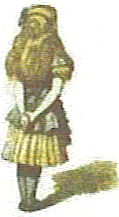
Now how often have we seen the ability of good science people brains tested with actually "construction techniques" in the everyday world? Be it, some calculation on how much concrete is to be supplied in the driveway to drain the water to the drain area in the most appropriate way?
A Sundeck which need some repairs, to have concluded the types of painting to make it last that little longer? You remember who you are.
Well, as a "lay person" I am not a very good science person, yet, neither am I a
very good builder with little tolerance for constructing on the large scale.
But I persevered, and challenge myself. Find, that doing it with someone you brought into the world, has been a really enjoyable time. Imagine, a trwenty six year old with out the history building as he has done, leading his poor Father through the time.:)
The PlanSo yes, it is always good idea to have a plan for the model which you choose to construct. Ideas, to manifest in real mattered forms. In the following, I seen these things, and should have drawn the plan, but I like to "wing it" in case I need to adjust.
But hey, that's not very good either. You tend to waste good hard earned money.
You all know that ole adage, "measure twice, cut once?" I know practise makes perfect.
Building the aggregate patioSo anyway I had my own things that needed to be done in accordance with something that we as a family enjoy. While physically we can and do work hard, we find the beauty and peace of sitting under the stars quite tranquil. We like to rest the weary bones in the soothings waters of the Hot Tub.
So ya, the plan included a Hot Tub and a place to put it. A place "over it" with the Gazebo pictured above, to protect it from the wind, snow, sleet and everything else that nature can throw at you. You see we had one before and being in the open we change lids often which were costly in themself. So this new one, was to be protected to reduce the cost over the long run.
Also energy concerns were an issue compared to the ole hot tub, which ran electricity as if somebody turned on a tap. Like water conservation, which I had reiterated in my previous posts about our living in the wilds, thes ethings of course are of a concern. New technologies make these things more capable which is another reason we bought a new one.
Hot Tub Here now the Gazebo?As you can see as you click on picture and enlarge it, it also meant putting in new shrubs and plants. Also, you'll notice that there are still "white boards there" with which I had to build the Gazebo over top of the Hot Tub. Not good planning again. Thes ewere used to put baorads acrss as I was then able to work above.

The roof is to be a clear Suntuff, that has yet to be put up. This will be taking place over the next couple of days.



 Piglet describes the Heffalump,. in Winnie the Pooh by AA Milne.
Piglet describes the Heffalump,. in Winnie the Pooh by AA Milne.